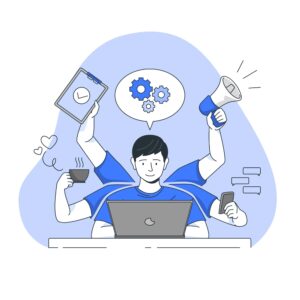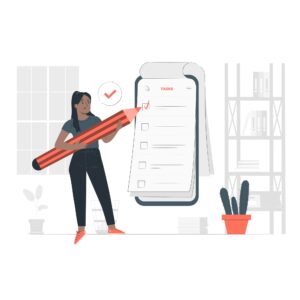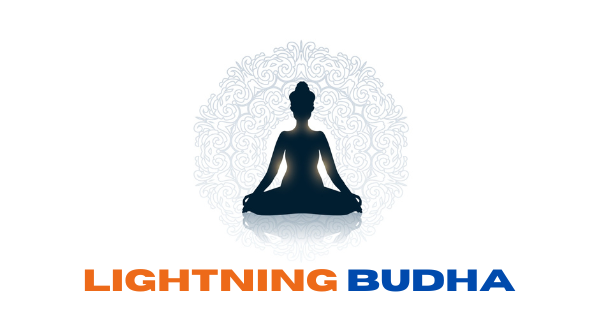Discover the art of mindful multitasking and master the art of navigating multiple tasks with lightning focus. Unlock productivity secrets and enhance efficiency with our expert insights. Dive in now!
Mindful Multitasking: Navigating Multiple Tasks with Lightning Focus
In today’s fast-paced world, multitasking has become a necessity to keep up with our demanding schedules. However, the constant juggling of tasks can often leave us feeling overwhelmed and stressed.
Fortunately, there is a solution: mindful multitasking. By incorporating mindfulness techniques into our multitasking endeavors, we can navigate multiple tasks with ease and maintain a sense of calm and focus.
In this article, we will explore the concept of mindful multitasking and provide practical tips to help you master this valuable skill.
“You don’t have to be great to start, but you have to start to be great.” – Zig Ziglar
Understanding Mindful Multitasking:
Mindful multitasking is the art of engaging in multiple tasks while maintaining present-moment awareness and focused attention.

It involves being fully present and attentive to each task at hand, without allowing distractions or mental clutter to interfere. By practicing mindful multitasking, we can enhance productivity, improve efficiency, and reduce stress levels.
2. The Pitfalls of Multitasking:
While multitasking may seem like a productivity booster, research suggests that it can impair cognitive performance. Constantly switching between tasks can lead to decreased focus, increased errors, and reduced overall efficiency.

Moreover, it can take a toll on our mental well-being, as the stress of managing multiple responsibilities simultaneously can be overwhelming. Mindful multitasking offers a way to mitigate these challenges and reap the benefits of multitasking without sacrificing productivity.
3. Cultivating Mindful Multitasking:

a. Prioritize tasks: Start by identifying the most important tasks that require your immediate attention. By focusing on high-priority tasks, you can allocate your energy and resources more effectively.
b. Set realistic goals: Break down larger tasks into smaller, manageable segments. Setting realistic goals helps to prevent overwhelm and allows you to approach each task with a clear plan.
c. Eliminate distractions: Minimize external distractions such as phone notifications or background noise. Create a dedicated workspace that promotes focus and concentration.
d. Practice single-tasking: While it may seem counterintuitive, practicing single-tasking can improve your ability to multitask mindfully. By dedicating your full attention to a single task, you enhance your focus and concentration, making it easier to transition between tasks seamlessly.
e. Take mindful breaks: Schedule short breaks between tasks to recharge and reset your focus. Engaging in mindfulness exercises, such as deep breathing or stretching, can help you stay centered and refreshed throughout the day.
f. Practice self-compassion: Be kind to yourself and acknowledge that perfection is not attainable. Embrace mistakes as learning opportunities, and maintain a positive mindset as you navigate multiple tasks.
The Benefits of Mindful Multitasking:
When practiced effectively, mindful multitasking can bring a range of benefits:

- Enhanced productivity: By staying present and focused, you can accomplish more in less time.
- Reduced stress: Mindfulness techniques help to alleviate stress and promote a sense of calm amidst the chaos of multitasking.
- Improved quality of work: Mindful multitasking allows for greater attention to detail, resulting in higher-quality outcomes.
- Enhanced work-life balance: By managing tasks efficiently, you can free up time for personal pursuits and activities that bring you joy.
4. Mindfulness Techniques for Multitasking:

a. Breath awareness: Paying attention to your breath can anchor you in the present moment and help you stay focused. Take a few deep breaths before transitioning to a new task or whenever you feel your attention waning.
b. Body scan: Perform a quick body scan to check in with your physical sensations. This practice can help you release tension and bring your awareness back to the task at hand.
c. Mindful transitions: Instead of rushing from one task to another, take a moment to pause and mentally transition. Let go of the previous task and bring your full attention to the upcoming one. This helps you avoid carrying mental baggage from one task to another.
d. Non-judgmental awareness: Practice observing your thoughts and emotions without judgment. When distractions arise, acknowledge them without getting caught up in them. This non-judgmental awareness allows you to maintain focus and shift your attention back to the task at hand.
5. Digital Mindfulness:
In today’s digital age, technology can both aid and hinder mindful multitasking. Here are a few tips to promote digital mindfulness:

a. Set boundaries: Establish specific times for checking emails, messages, or social media. Avoid constant interruptions and notifications by turning off non-essential alerts.
b. Digital detox: Take regular breaks from screens to give your mind a rest and reduce digital overwhelm. Use these breaks to engage in offline activities that promote relaxation and rejuvenation.
c. Mindful app usage: Consider using apps that promote mindfulness and productivity. There are various apps available that offer guided meditations, timers, and task management tools to help you stay focused and organized.
6. Overcoming Challenges:

a. Practice patience: Multitasking requires patience and a willingness to adapt to changing priorities. Accept that unexpected challenges may arise, and approach them with a calm and flexible mindset.
b. Learn from mistakes: If you find yourself overwhelmed or making errors, view them as opportunities for growth. Reflect on what could be improved and adjust your approach accordingly.
c. Seek support: Don’t hesitate to reach out for help or delegate tasks when needed. Collaborating with others can alleviate the burden of multitasking and create a more efficient workflow.
Mindful Multitasking in Everyday Life:
While multitasking is often associated with work-related activities, mindful multitasking can be applied to various aspects of life:

a. Personal responsibilities: Whether it’s managing household chores, caring for loved ones, or pursuing personal hobbies, applying mindful multitasking can help you achieve a better balance and maximize your time.
b. Interpersonal interactions: Practice mindful listening during conversations, giving your full attention to the person speaking. This enhances your connection and understanding.
c. Self-care: Incorporate mindfulness into self-care activities such as exercising, cooking, or practicing hobbies. Engage fully in the present moment, savoring the experience and nurturing your well-being.
Remember, mindful multitasking is a skill that develops with practice. Be patient with yourself as you cultivate this habit, and celebrate the progress you make along the way.
By embracing mindfulness and focusing on the present moment, you can navigate multiple tasks with clarity, efficiency, and a sense of fulfillment.
Conclusion:
Mindful multitasking is a powerful skill that enables us to navigate the complexities of our modern lives with grace and efficiency.
By incorporating mindfulness into our multitasking endeavors, we can achieve a state of lightning focus while maintaining a sense of calm. Remember to prioritize tasks, set realistic goals, eliminate distractions, practice single-tasking, take mindful breaks, and cultivate self-compassion.
Embrace the benefits of mindful multitasking and unlock your full potential in both your personal and professional endeavors.
“The only limit to our realization of tomorrow will be our doubts of today.” – Franklin D. Roosevelt
Other Interesting Posts To Read:
Maximizing Productivity: How to Get More Done in Less Time
5 Mindful Practices for Lightning-Fast Decision Making
Mindful Breaks: Recharging Your Energy with Lightning-Fast Pauses


